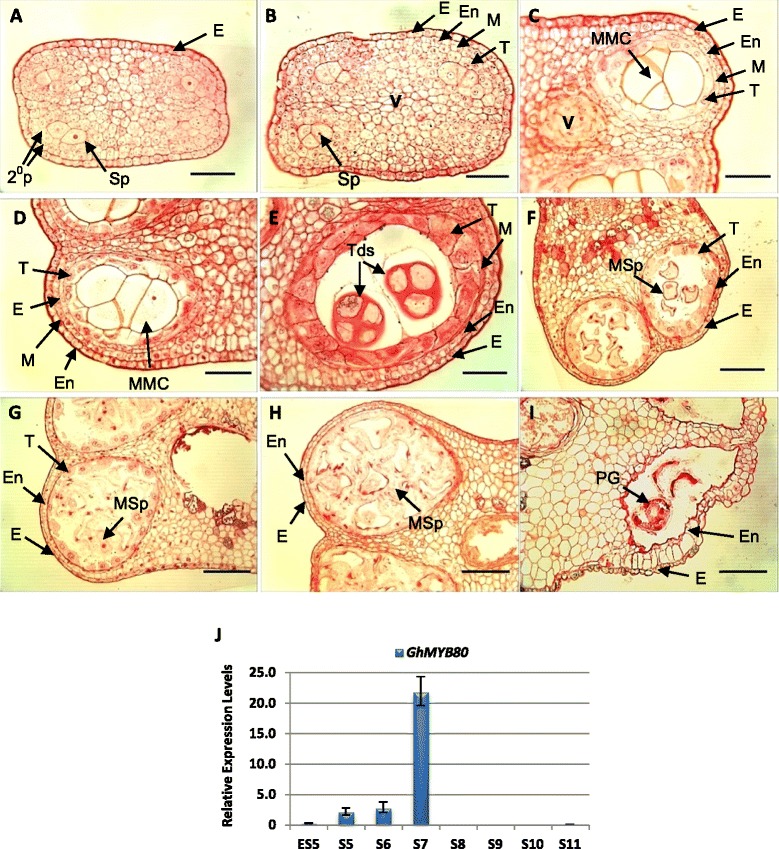Figure 4.

Semi-thin sections of developing G. hirsutum anthers and relative transcript levels of GhMYB80 in anthers. The indicative bud sizes for each anther developmental stage were measured (Additional file 5: Table S3). A. At stage 3, the secondary parietal layers and sporogenous cells are apparent. B. At stage 4, formation of the epidermis, endothecium, middle layer and tapetum has been initiated. C. At stage 5, the microspore mother cells appear. D. At stage 6, the microspore mother cells commence meiosis and the tapetal cells become vacuolated. E. At stage 7, the tapetal cytoplasm is condensed and tetrads appear in the anther locules. F. At late stage 8, microspores are released from the tetrads. Tapetal cell walls have been degraded. G. At stage 9, the tapetum degeneration appears to commence. Microspores are vacuolated. H. At stage 10, the tapetum has been degraded. Remnants of tapetal cells are visible. The microspores are still vacuolated. I. At stage 11, early pollen grains appear. 2°P, secondary parietal layer; E, epidermis; En, endothecium; MSp, microspores; ML, middle layer; MMC, microspore mother cell; MSp, microspore; PG, pollen grains; Sp, sporogenous cells; T, tapetum; Tds, tetrads; V, vascular. Scale bars = 50 μm in A, B, C, D and E. Scale bars = 100 μm in F, G, H and I. J. Relative expression levels of the GhMYB80 in the wild-type Gossypium hirsutum anther. The GhMYB80 transcription level was relatively low at early stage 5 (ES5), stages 5 and 6. It reached a peak level at stage 7 of anther development and was absent from late stage 8 (LS8) to stage 11. The G. hirsutum UBIQUITIN (UBI1) was used as the reference gene. S5 to S11, stages 5 to 11. Error bar represents SD.
